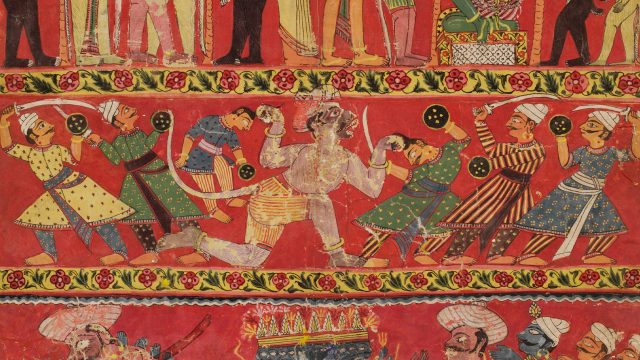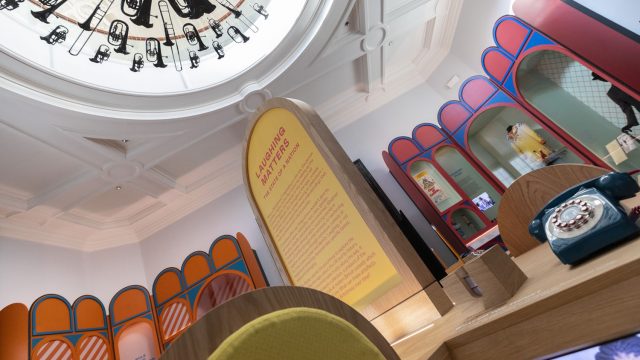With the passing of one of Japan’s greatest fashion designers, we pay tribute to Issey Miyake’s life and works through four objects in the V&A.
The V&A is home to several of Miyake’s most iconic works, which showcase the breath and variety of his output. Not only was he a master of textiles, he also channelled his unique vision into furniture and lighting through a number of important artistic collaborations.
Reflecting on his life and works, it is remarkable that he was able to make luxury clothing that was so instantly recognisable through formal elements of shape and cut, without incorporating logos, all-over monograms or signature colours.
Dress, 2014 – 2015, from ‘132 5’
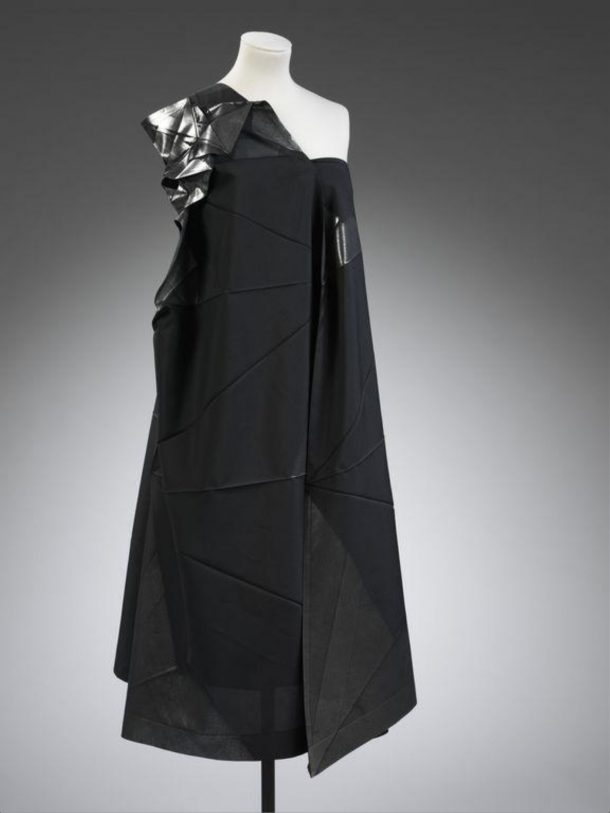
When Euclid began to theorise geometric shapes in 300 BCE, he certainly could not have foreseen how much his work would influence fashion designers over two thousand years later. Miyake’s line ‘132 5.’ is the culmination of mathematical precision and creative ingenuity.
This dress is made from a single piece of cloth, folded to make a flat shape. When pulled upwards from the centre, the cloth transforms into a dress, preserving the creases where it was originally folded. Miyake named the range for its components: 1 piece of cloth, which forms a 3-dimensional form that can be folded flat into a 2-dimensional shape; wearing of the garment expresses a ‘5th dimension’. The effect is extremely striking and theatrical, as we see a flat shape come alive and turn into an unexpected 3D garment. You can see other garments in the range here.
Pleats Please’, Issey Miyake X Ikko Tanaka
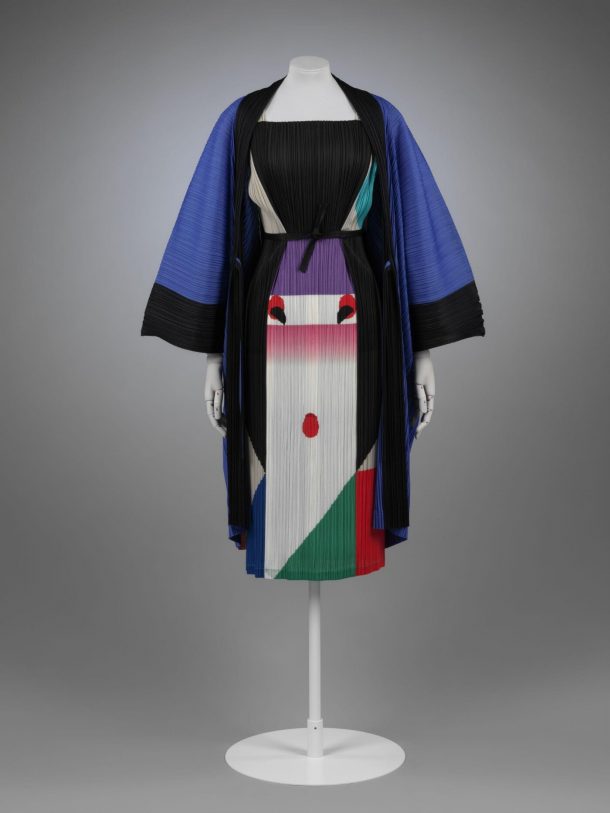
Anyone who has shopped at the lifestyle store Muji has encountered the work of Tanaka Ikko (1930 – 2002), regarded as one of the greatest, if not the greatest, Japanese graphic designers of the twentieth century. Miyake himself studied graphic design before entering the world of fashion, and so it is perhaps unsurprising that he found such an affinity with Tanaka’s work.
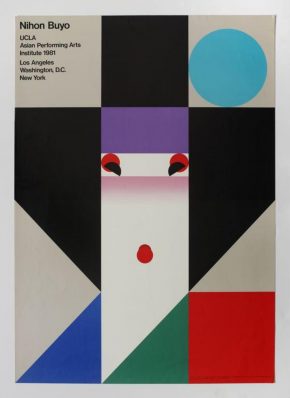
Over the course of their careers, Miyake and Tanaka collaborated on several projects including, from 1987 – 99, the graphic designer’s posters for Miyake’s collections which featured photography by Irving Penn. And yet, despite their longstanding relationship, it was not until after Tanaka’s passing in 2002 that his bold designs were combined with the pleated textiles of Miyake’s clothing.
In 2016, Miyake’s label ‘Pleats Please’ launched the first of the IKKO TANAKA ISSEY MIYAKE series. This dress is an early piece from this series, referencing Tanaka’s most famous poster. Its block-coloured geometric shapes lend themselves perfectly to the dart-less pattern cutting of ‘Pleats Please’, and create straight lines on the body, reminiscent of kimono.
Prototype Cabbage Chair, 2008
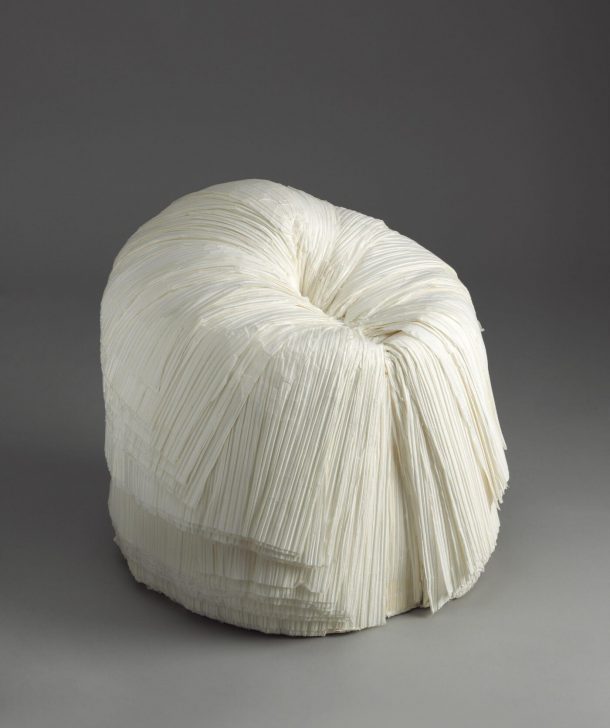
Sustainability is one of fashion’s biggest challenges. A by-product of Miyake’s signature pleats is the many sheets of paper between which the garments are sandwiched for the heat pressing process. In the production process, the paper is pleated with the fabric, leaving behind hundreds of metres of unwanted crinkly paper.
This ‘waste’ was the starting point of the Cabbage Chair, a collaboration between Miyake and industrial designer Oki Sato of Nendo studio. Miyake asked Sato to create a chair from the rolls of discarded paper, and the result was simple, as Sato explains: ‘Cut and peel, cut and peel, and in the end it became something like a chair’. On seeing the prototype Miyake insisted that it should not be altered any further, delightfully naming it Cabbage Chair, as to him it resembled the vegetable.
Like Miyake’s pleated garments, Sato’s chair has a discreet elegance. What’s more, the chair uses 100% of the discarded paper, without producing any further waste.
‘IN–EI’ light (2012)
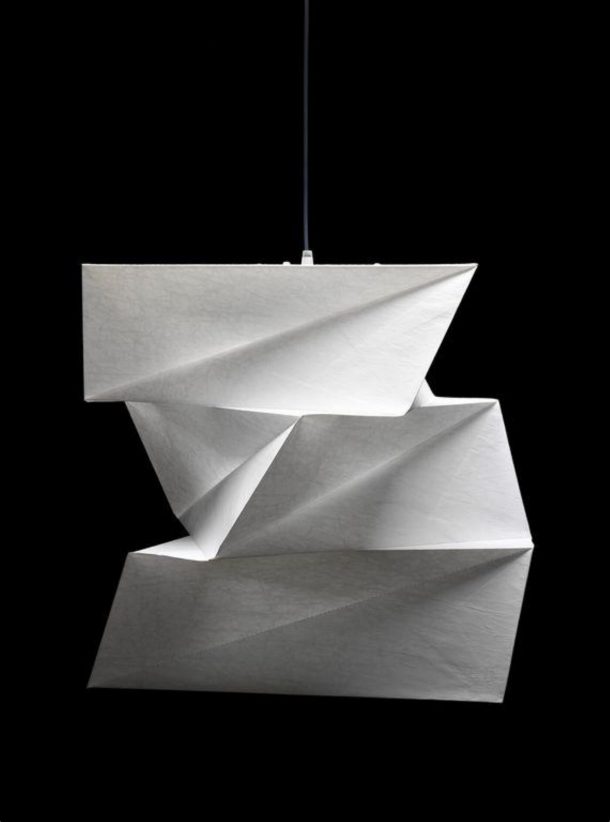
In 1933 the novelist Jun’ichirō Tanizaki published the essay In Praise of Shadows, in which he famously wrote ‘Were it not for shadows, there would be no beauty’. It has been hailed as one of the most significant texts on Japanese aestheticism.
Drawing on Tanizaki’s emphasis on the subtlety of light and shadow in the Japanese home, Miyake embarked on a collaboration with the Italian product design company Artemide. Together they produced IN-EI (‘shadow’ in Japanese), a series of folded lampshades that, when opened, create twisting geometric sculptures. Like the ‘132 5’ dress (above), the lampshades strike a distinctive balance between mathematical precision and organic forms. The example in the V&A collection is named Katatsumuri, the Japanese word for snail.
Material innovation has always been at the core of the Miyake Design Studio (founded in 1970). In the case of IN-EI, although the lampshades have the appearance of being made from traditional Japanese washi paper, they are in fact made from recycled plastic bottles.
In the studio’s own words, its aim is to ‘[generate] ideas that expand outward as we pursue the creation of products and manufacturing skills required to suit the needs of the current generation and time’. IN-EI addresses the need for lighting that creates harmony between light and shadow, in a form that also helps to resolve ever pressing issues of plastic waste.
These are just four of the many projects in a design career that established Issey Miyake as a phenomenal innovator and collaborator.
For Miyake, the principle of design was to find something deeper than clothes to wear or objects to use. Whether it was about harnessing the beauty of geometry, cherishing materials or noticing the subtlety of light and shadow, each of his designs was a profound expression of how we exist within the world.

